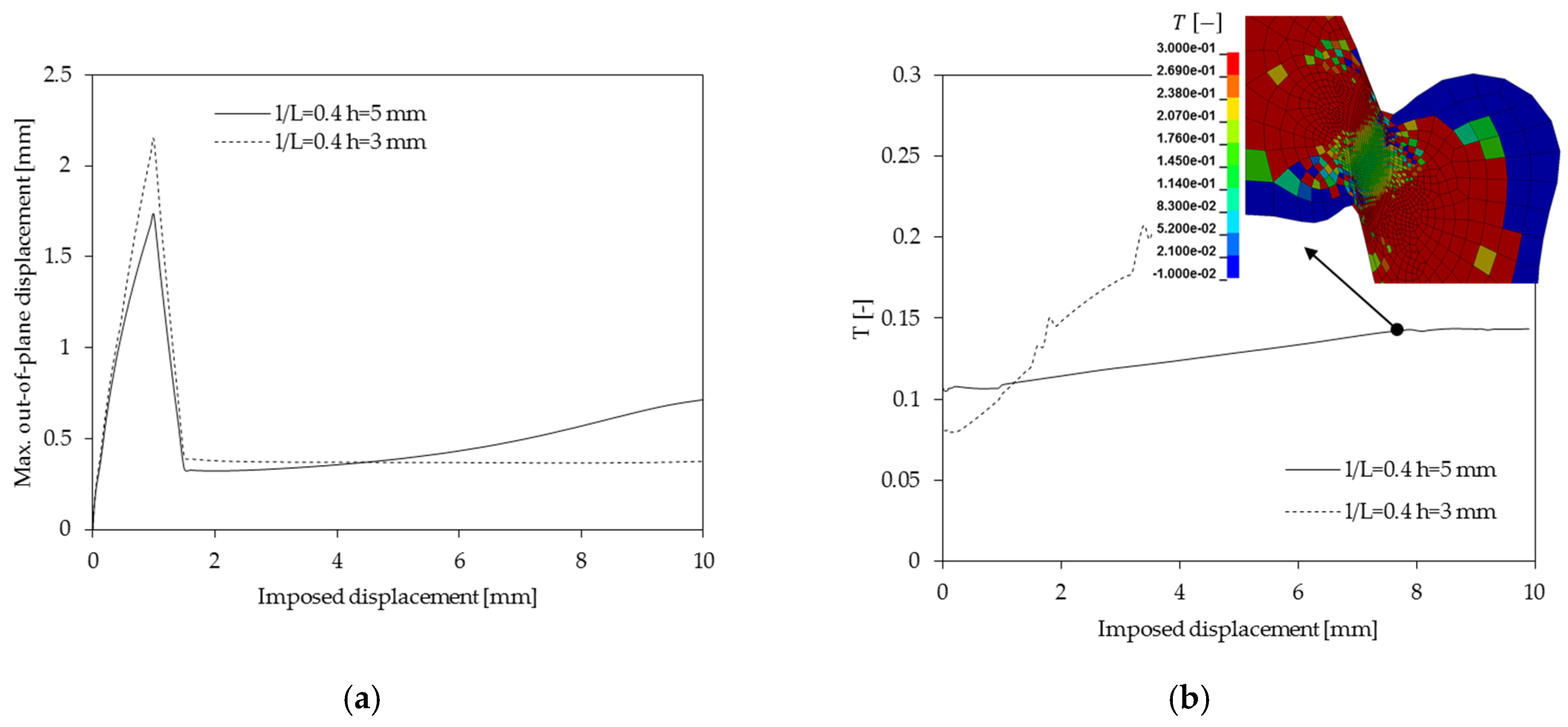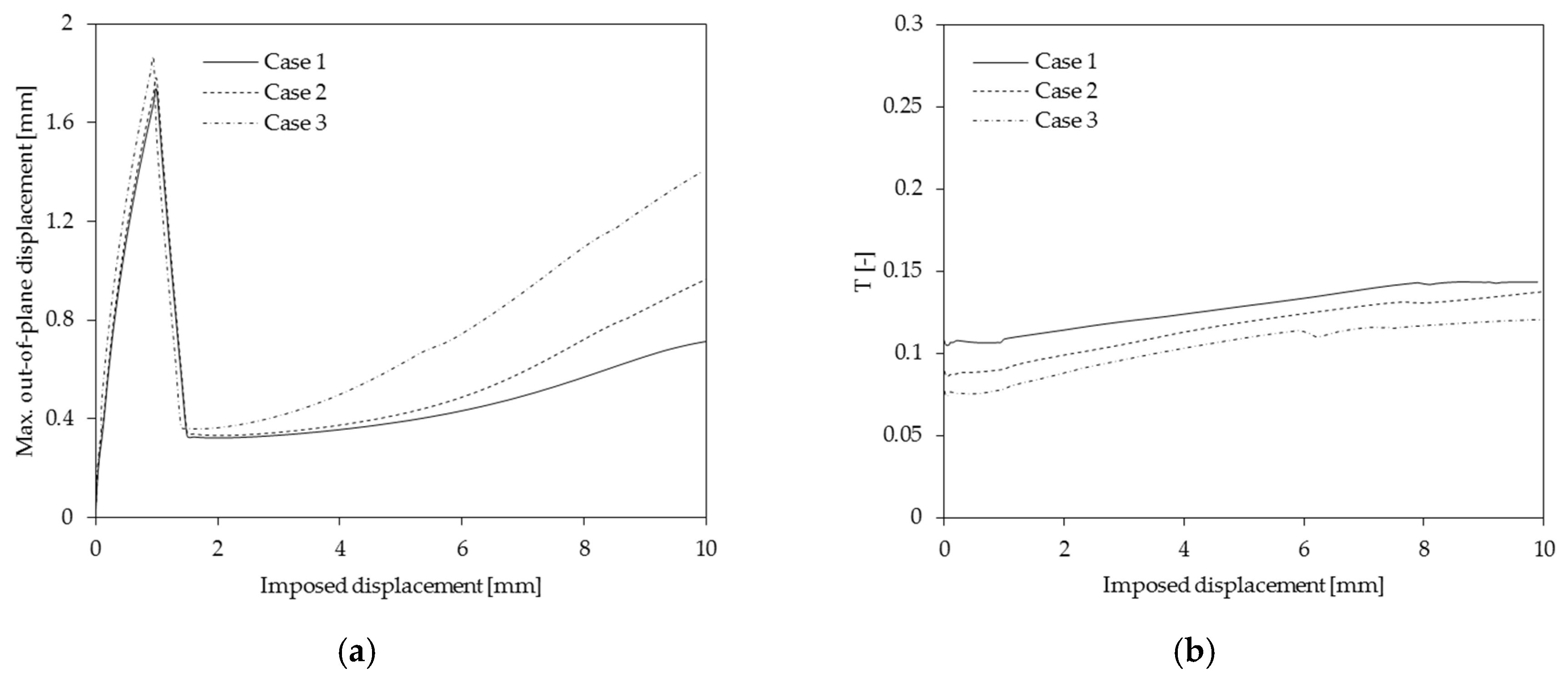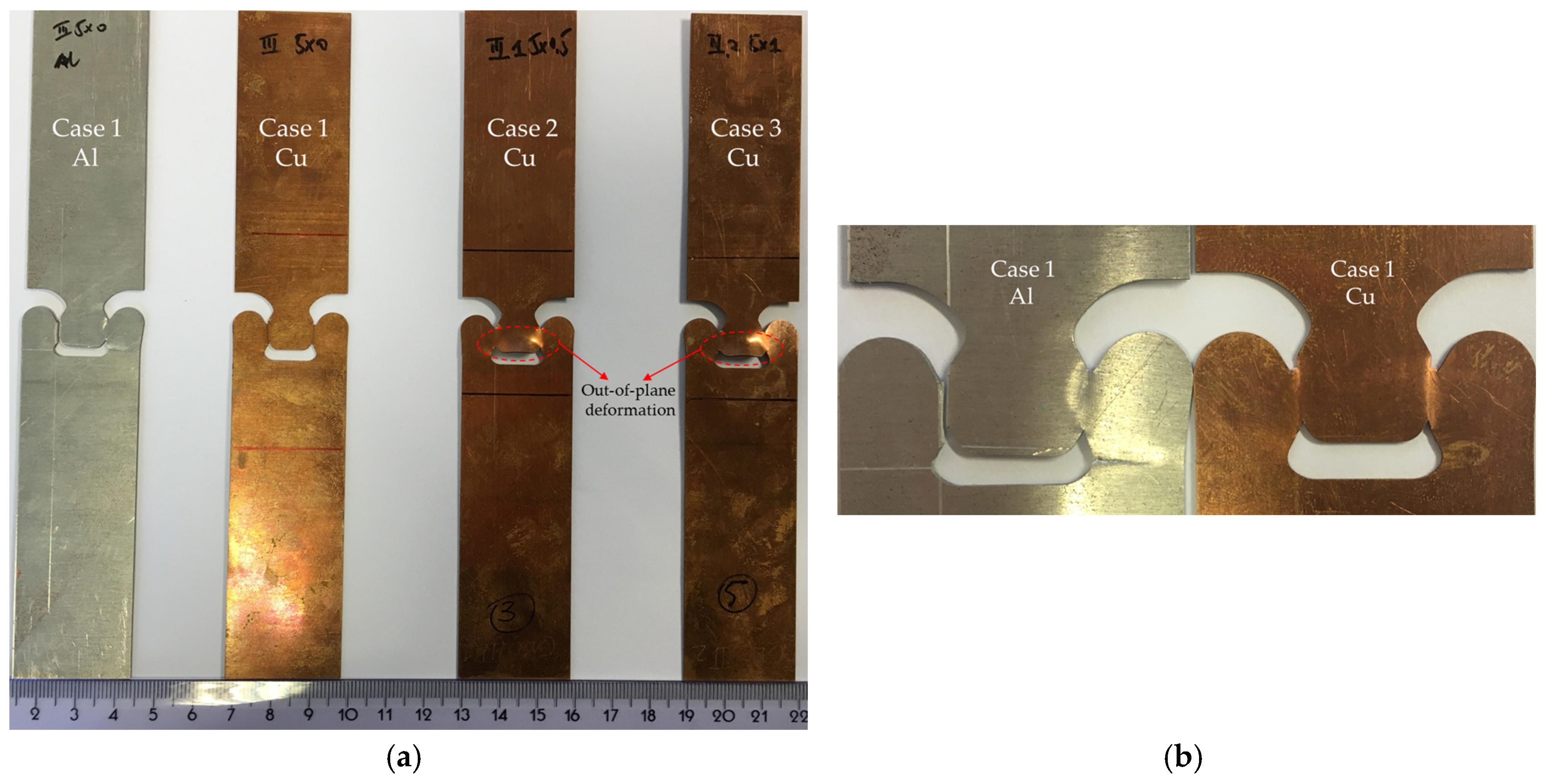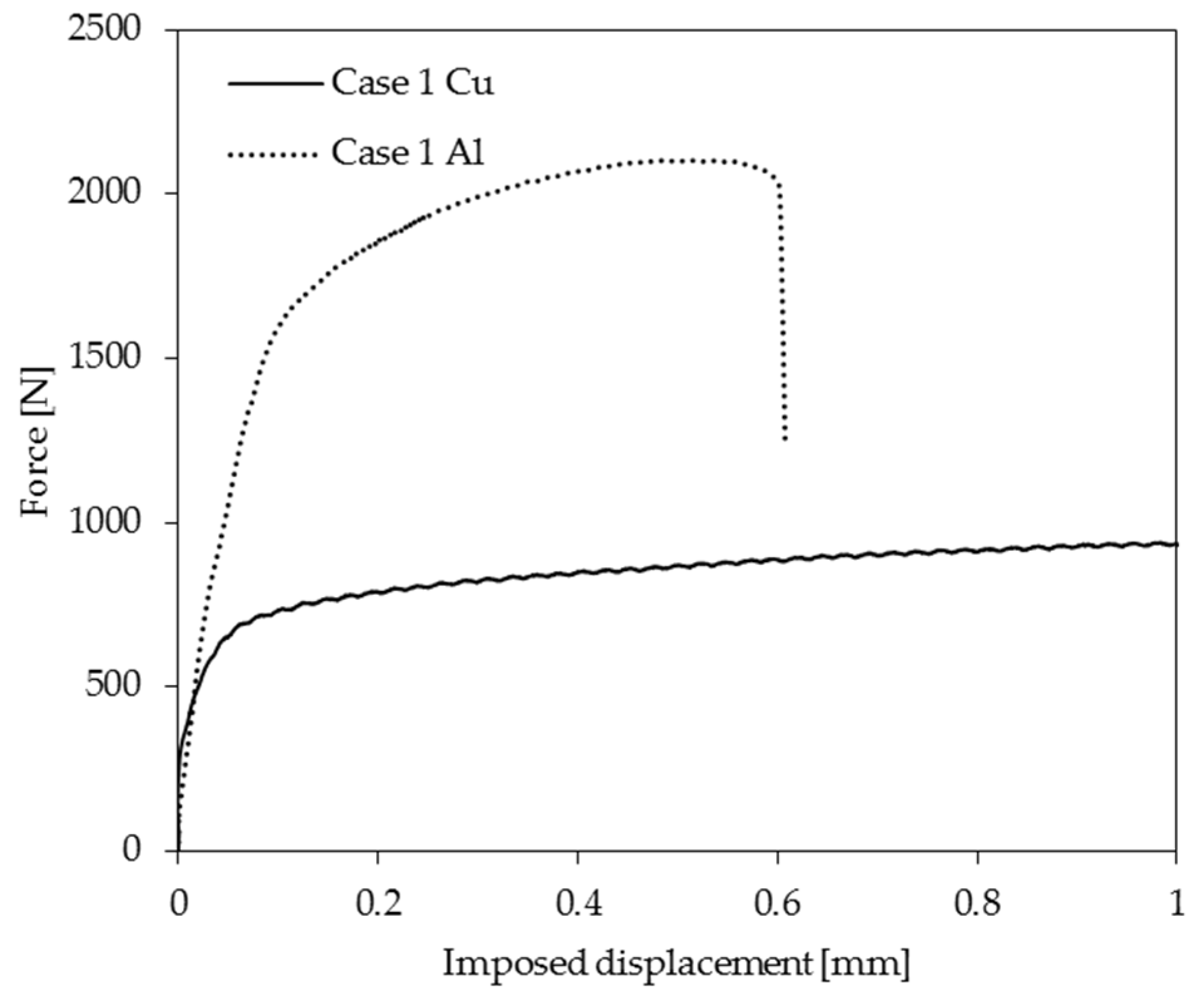A Novel Geometry for Shear Test Using Axial Tensile Setup †
Abstract
:1. Introduction
2. Numerical Modeling
3. Numerical Results
3.1. Influence of and Parameters
3.2. Influence of Shift of Shear Zone
4. Experimental Results
5. Conclusions
Acknowledgments
Conflicts of Interest
References
- Hug, E.; Dubos, P.A.; Keller, C. Temperature dependence and size effects on strain hardening mechanisms in copper polycrystals. Mater. Sci. Eng. A 2013, 574, 253–261. [Google Scholar] [CrossRef]
- Keller, C.; Hug, E.; Chateigner, D. On the origin of the stress decrease for nickel polycrystals with few grains across the thickness. Mater. Sci. Eng. A 2009, 500, 207–215. [Google Scholar] [CrossRef]
- Keller, C.; Hug, E.; Retoux, R.; Feaugas, X. TEM study of dislocation patterns in near-surface and core regions of deformed nickel polycrystals with few grains across the cross section. Mech. Mater. 2010, 42, 44–54. [Google Scholar] [CrossRef]
- Dubos, P.A. Influence de la Température et du Trajet de Chargement sur les Transitions Volume-Surface des Métaux Cubiques à Faces Centrées. Ph.D. Thesis, Université de Caen/Basse-Normandie, Caen, France, 2013. [Google Scholar]
- Li, H.; Fu, M.W.; Lu, J.; Yang, H. Ductile fracture: Experiments and computations. Int. J. Plast. 2011, 27, 147–180. [Google Scholar] [CrossRef]
- Peirs, J.; Verleysen, P.; Degrieck, J. Experimental study of the influence of strain rate on fracture of Ti6Al4V. Procedia Eng. 2011, 10, 2336–2341. [Google Scholar] [CrossRef]
- Peirs, J.; Verleysen, P.; Paepegem, W.V.; Degrieck, J. Novel pure-shear sheet specimen geometry for dynamic material characterization. In Proceedings of the DYMAT 2009 Conference, Brussels, Belgium, 7–11 September 2009; pp. 35–41. [Google Scholar] [CrossRef]
- Peirs, J.; Verleysen, P.; Degrieck, J.; Coghe, F. The use of hat-shaped specimens to study the high strain rate shear behaviour of Ti-6Al-4V. Int. J. Impact Eng. 2010, 37, 703–714. [Google Scholar] [CrossRef]
- Reyes, A.; Eriksson, M.; Lademo, O.; Hopperstad, O.S.; Langseth, M. Assessment of yield and fracture criteria using shear and bending tests. Mater. Des. 2009, 30, 596–608. [Google Scholar] [CrossRef]
- Keller, C. Etude expérimentale des transitions volume/surface des propriétés mécaniques du nickel polycristallin de haute pureté. Ph.D. Thesis, Université de Caen/Basse-Normandie, Caen, France, 2009. [Google Scholar]







| Material Parameters | Symbols | Unit | Magnitude |
|---|---|---|---|
| Young’s modulus | E | MPa | 210,000 |
| Poisson’s ratio | ν | — | 0.31 |
| Hardening constant | c | MPa | 934.25 |
| Exponent hardening | n | — | 0.57157 |
© 2018 by the authors. Licensee MDPI, Basel, Switzerland. This article is an open access article distributed under the terms and conditions of the Creative Commons Attribution (CC BY) license (https://creativecommons.org/licenses/by/4.0/).
Share and Cite
Yuan, S.; Duchêne, L.; Milis, O.; Keller, C.; Hug, E.; Habraken, A.-M. A Novel Geometry for Shear Test Using Axial Tensile Setup. Proceedings 2018, 2, 422. https://doi.org/10.3390/ICEM18-05277
Yuan S, Duchêne L, Milis O, Keller C, Hug E, Habraken A-M. A Novel Geometry for Shear Test Using Axial Tensile Setup. Proceedings. 2018; 2(8):422. https://doi.org/10.3390/ICEM18-05277
Chicago/Turabian StyleYuan, Sibo, Laurent Duchêne, Olivier Milis, Clément Keller, Eric Hug, and Anne-Marie Habraken. 2018. "A Novel Geometry for Shear Test Using Axial Tensile Setup" Proceedings 2, no. 8: 422. https://doi.org/10.3390/ICEM18-05277




